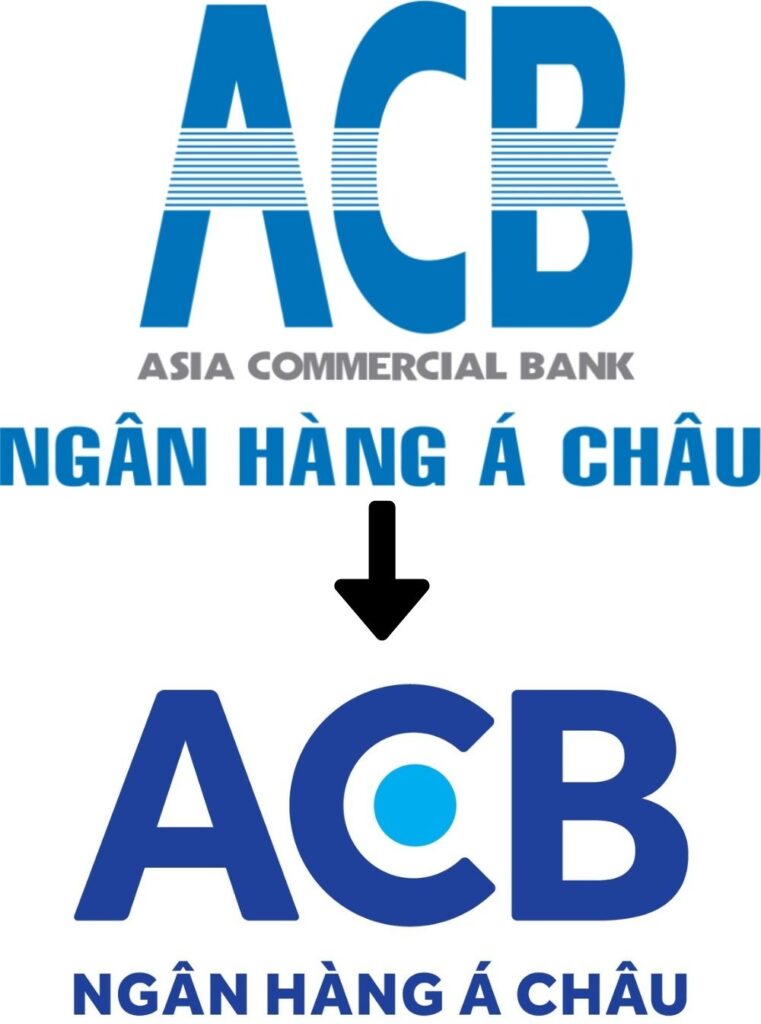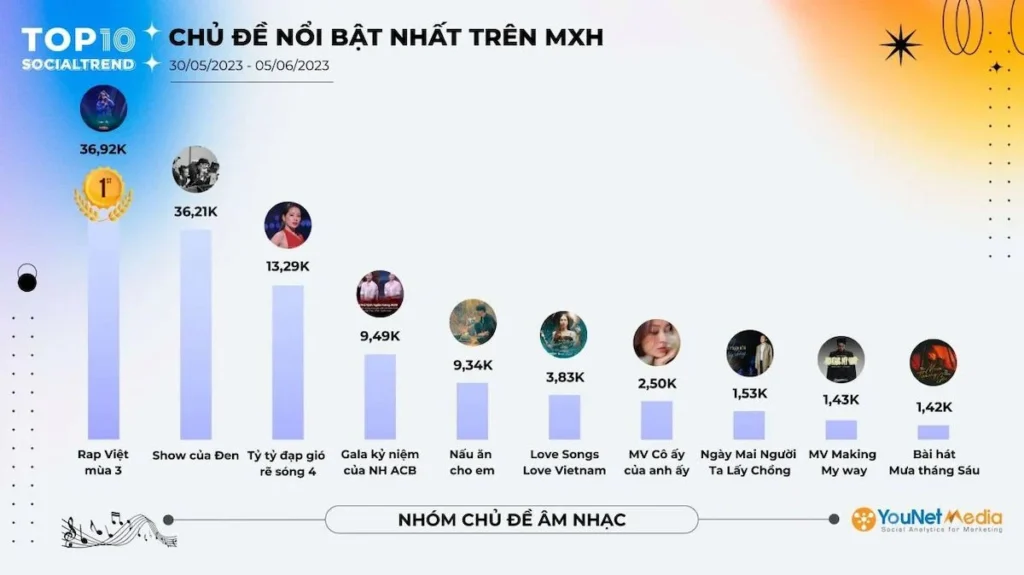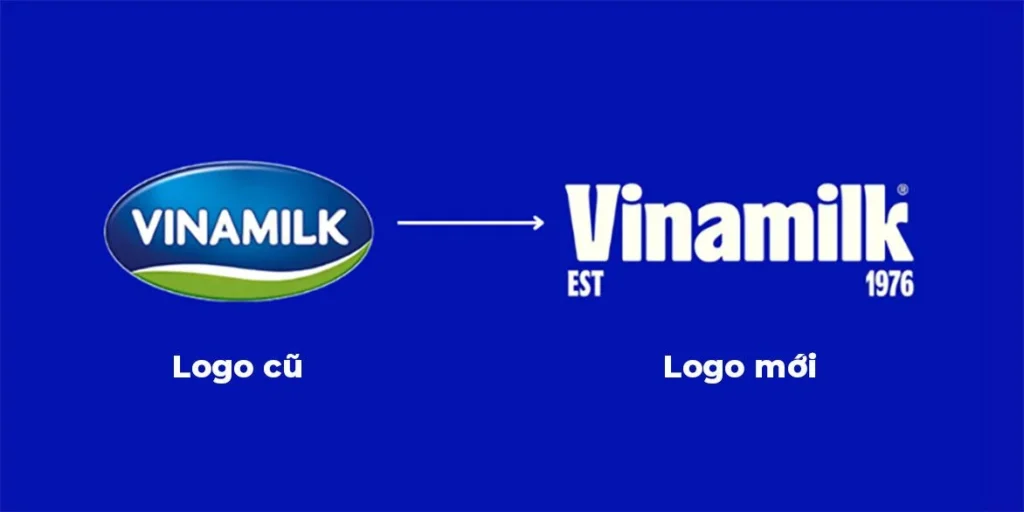In early June 2023, ACB Bank marked its historic 30-year milestone with the message “Tiếp nối giá trị cho mai sau” (Continuing Value for the Future) through a groundbreaking performance on various social media platforms by Mr. Tran Hung Huy, the Chairman of ACB Bank. This video achieved remarkable success, such as ranking first on the Top 10 Highlighted Events on social media in June 2023, according to data published by Buzzmetrics.
When considering the overall picture, it is not difficult to recognize the thoroughness of ACB Bank’s 30th-anniversary campaign, in which the “rain dance” event played a key role as a “key asset” of the entire plan. So why is the online community and marketing industry constantly discussing this campaign? What has the ACB brand achieved and gained after Mr. Huy emerged with a completely different stereotype than that of a banker?
Along with this curiosity, Brands Vietnam had a conversation with Mr. Nguyen Hai Minh, CEO of Wisdom Agency, in the 15th article of the Deep Dive series, to look back on what has happened and evaluate what ACB has achieved.
Deep Dive is a series of in-depth interviews that explores significant decisions, topics, and notable events in brand building, marketing, advertising, and communications.
- In early June, the “rain dance” video featuring ACB Bank’s Chairman, Tran Hung Huy, went viral on various social media platforms. Alongside its natural spread, there were doubts about whether the clip was pre-planned. What do you think, was it “organic” or “premeditated”?
In reality, every marketer hopes for their brand’s communication campaign to go viral. However, no one can be certain about when a campaign will go viral or the level of emotional impact it will create. If we assume it was “premeditated,” it would involve unnecessary risks, so I lean more towards the likelihood of it being “organic” combined with quick adaptation.
Furthermore, it can be observed that Chairman Tran Hung Huy has garnered significant public attention through his performances this year. In fact, he has been quite active on social media, and his presence is not limited to this year alone. What is remarkable is that this year’s performance has achieved exceptional media coverage compared to previous appearances.
Therefore, personally, I highly appreciate the marketing team at ACB Bank for their ability to adapt quickly and seize the opportunity to create a “key asset” – a focal point for the entire 30th-anniversary campaign, thereby increasing public awareness.
In general, all viral marketing campaigns require some level of planning. However, the most important factor in marketing (whether viral or not) is the ability to adapt to the market and respond to the crowd.

- Alongside supportive opinions, many experts argue that publicly revealing one’s identity on social media, along with a persona that carries an artistic impression, is not suitable for the financial and banking industry. What is your perspective on this viewpoint, Mr. Minh?
Based on my personal observations, people often have cognitive biases when it comes to individuals working in the financial and banking industry. One reason for this is the nature of the industry, which involves managing customers’ money. As a result, the majority of people expect a professional, trustworthy, and serious image from banks.

Influenced by stereotypes, when the term “bank chairman” is mentioned, most people tend to think of qualities such as maturity or seriousness. However, Mr. Huy’s performance went against the grain – a young, artistic, and talented bank chairman. This novelty naturally led to mixed reactions, which is also normal.
However, from a professional perspective, deviations from the norm can be highly effective in generating interaction or discussion, intentionally creating highlights for the ACB30 campaign. Marketers often joke with each other on social media, saying, “The marketing team works all month, but the Chairman can create a buzz in one night,” and there’s some truth to that. The agency executing this campaign is fortunate to have a famous and “playful” in-house “KOL” (Key Opinion Leader).
From a corporate branding standpoint, looking back at the history of repositioning by many banks in Vietnam, many names have boldly innovated to become more youthful. In 2015, ACB also changed its brand identity to a more youthful direction, but this “rejuvenation” step is clearly more daring.
Before and after Chairman Tran Hung Huy’s viral performance on social media platforms, ACB’s main communication channels have engaged in a series of continuous activities since the beginning of the “ACB 30th Birthday” campaign, such as remixing the iconic ACB song “Mỗi ngày tôi chọn một niềm vui” (Every day I choose a joy).
In your opinion, how are these communication activities interconnected, and what specific message is ACB trying to convey?
Based on my observation, it is not difficult to see the integration of various marketing activities (IMC) for the entire ACB 30 campaign alongside Mr. Huy’s performance. While young customers are easily attracted by the modern remix of the iconic song “Mỗi ngày tôi chọn một niềm vui,” the bank still pays certain attention to its traditional customers through activities such as press PR or promotional programs. Even after the Chairman’s viral performance in the rain, ACB has been quick to catch the trend, incorporating the message into its service offerings and teasing “ACB will be there in the rain” on its fan page, along with other activities on social media platforms.
From the perspective of someone working in the industry, these activities are part of ACB’s 30th anniversary celebration campaign. It may not be a very long milestone for the banking industry, but it is an impressive number for a commercial bank like ACB, enough to pass the baton from one generation to the next. It is a historic milestone that any brand would feel proud of.
The 30th-anniversary milestone of ACB is a historic milestone that any brand would feel proud of.
Perhaps that is also the reason why ACB is conveying the message “Tiếp nối giá trị cho mai sau” (Continuing value for the future) – implying the aspect of inheritance in the bank’s 30-year milestone. For example, in the song “Mỗi ngày tôi chọn một niềm vui” (Every day I choose a joy), it is performed by renowned singer Mỹ Linh along with young singers like Mỹ Anh (the literal next generation of Mỹ Linh) and rapper Grey D. Simply put, ACB is saying that they always accompany every generation of customers, including both older individuals and the younger generation.
The third message that ACB wants to implicitly convey is the rejuvenation of the brand. As mentioned above, ACB wants to reach out to a younger customer base but without adhering to any stereotypes.
- If we consider everything that has happened as a campaign, how would Mr. Minh evaluate the effectiveness of the communication?
The dream of every marketer is to have a “viral” campaign, to be remembered with positive emotions associated with the brand name. So, evaluating from the perspective of the viral video of the “chairman dancing in the rain” alone, it can be considered a success, right? (laughs)
If we observe more closely, ACB’s communication campaign is implemented with the three aforementioned messages, and the performance by Mr. Tran Hung Huy, combined with other communication activities, has achieved better-than-expected results.
Furthermore, the main purpose of marketing is not only to increase brand awareness but also to build brand equity, which a viral marketing campaign alone cannot guarantee. Therefore, ACB’s marketing team needs to capitalize on the attention surrounding the youthful image of Chairman Huy and redirect public interest from “Hung Huy” to the bank’s products, services, and other communication activities to build the brand equity of the ACB brand.
Overall, this communication campaign by ACB is consistent and can be considered a success. The majority of people have reacted positively to Mr. Tran Hung Huy’s performance. According to data published by YouNet Media, his video clip has generated a high level of discussion on TikTok, with over 6,300 discussions and 58,210 interactions. This has contributed to strengthening and enhancing the effectiveness of ACB’s brand rejuvenation campaign that the team is aiming for.

In my prediction, from now until the end of 2023, ACB’s key marketing activities will continue to revolve around the theme of celebrating 30 years and targeting a younger customer base. This could involve incorporating more modern technological features, organizing exciting customer experience activities, as well as implementing attractive promotional programs or gifts to attract the younger generation. In my opinion, ACB’s marketing team is following the principles of the 4Ps (product, price, place, promotion) to retain customers for a longer period.
Regarding the personal branding of Chairman Tran Hung Huy, I am starting to see other aspects being explored, such as a love for nature linked to environmental protection activities. I believe this is intentional in the context of ACB continuously promoting sustainable development activities based on ESG criteria (Environment, Social, and Governance).
Recently, Vinamilk successfully drew public attention with their rebranding effort. However, in the case of ACB, despite clearly expressing their goal of brand rejuvenation, they did not change their visual identity (unlike the rebranding they underwent in 2015). According to you, what similarities do these two cases have that make the online community and the marketing industry curious?
In terms of similarities, both ACB and Vinamilk, with their goal of rejuvenation, aim to change their image based on the values they have built and inherited over decades. They choose different ways to externalize this shift in values through their communication activities. From an external perspective, it is evident that they both want to appear more youthful and diverse in a somewhat bold manner.
They both choose to go against the “norm.” While Vinamilk changed their visual identity to a more minimalist style, no longer holding onto their previous national identity, ACB portrays the image of a multi-talented artist, defying the expectations of traditional customers.

Overall, both brands have generated a significant amount of user-generated content naturally on social media. Alongside impressive communication effectiveness, the improvement in product and service quality indicates that brand rejuvenation is a long-term process and not an overnight affair.
In the long run, the success of the rejuvenation strategy must be evaluated by their own customers. With ACB’s 30th-anniversary campaign, they have successfully conveyed three main messages: a historical miles




